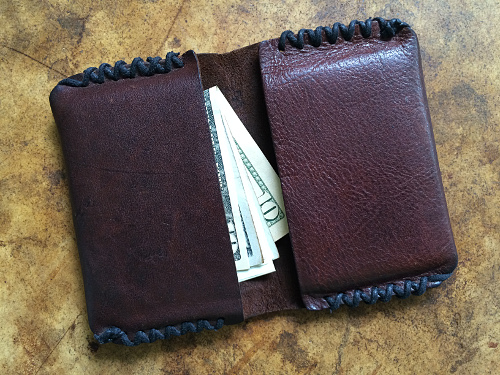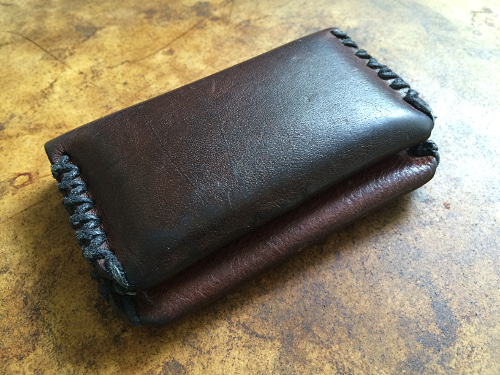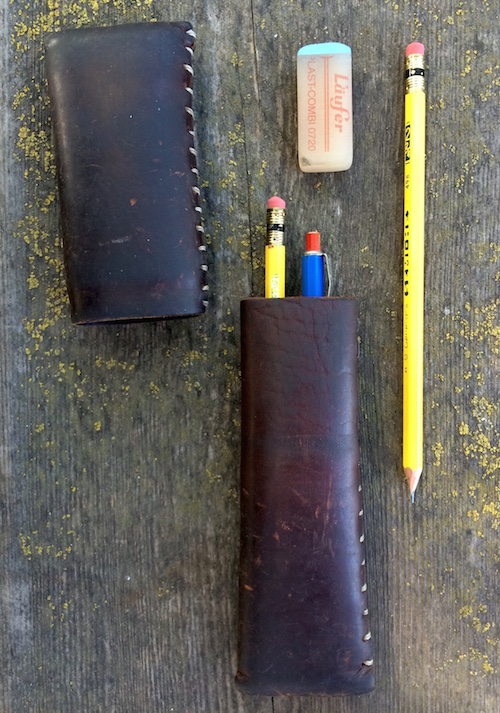
Home-Made-Leather-Wallet
These essays are now also available in book form, printed on real paper

This is my wallet. There’s not much to it, so there’s not much to say about it except … that two pockets are enough and it has no plastic card holders to get old and cracked, no Velcro to startle librarians when you open it to take out your library card (and ultimately to get fuzzy and useless), and no strange and expensive hide (eel? Snake? Ostrich?). The leather of my wallet (cow butt, I’m sure) is so thick and wonderful, it will never crack and fray like the thin and delicate stuff that men’s wallets are usually made out of. If it’s not clear from the pics, the pockets are only accessible when it is opened past 180 degrees: nothing ever falls out, even when it’s lying open and flat.

The pockets are deep and wide enough to carry lots of stuff: it carries cash, cards, a little emergency kit (made up of some bandages, bike tube patches with sandpaper, a sewing needle, and a small wind of dental floss for emergency repairs, or emergency flossing) some duct tape folded over a wallet-sized piece of itself 10 times (the second-most used thing in the wallet), pictures, and a plastic ball point pen cut to fit at the bottom of one side under everything else.
The only competition to this wallet in my eyes is the duct-tape wallet given to me by my friend Linda … but that wallet has been nabbed by my daughter.
Making kid-simple things like this out of natural materials gives me lots of pleasure: it’s free or close to it, and has an organically satisfying feel that can’t be beat.
(Low) tech writer principle #3: a truly functional and durable thing made by yourself or someone close to you is a wonderful thing: unique in the world.
Here’s a pen/pencil holder I made from the same scrap of leather. We disassembled an ancient, worn out shoulder bag my wife had gotten at the Monastiraki market in Athens when she was a kid (she grew up there). These bags, when new, are usually stiff and faded, pale and dry from hanging in the traditional leatherworker’s shop year after year–they have not been treated, oiled, or otherwise preserved. When you first get one of these bags and empty a whole bottle of neatsfoot oil on it, it looks like you’ve poured water on desert clay. But once it’s been oiled a few times, the thing takes on the rich and deeply beautiful quality of fine leather. Which is what it is.
It’s filled with good tools of the low-tech variety.

